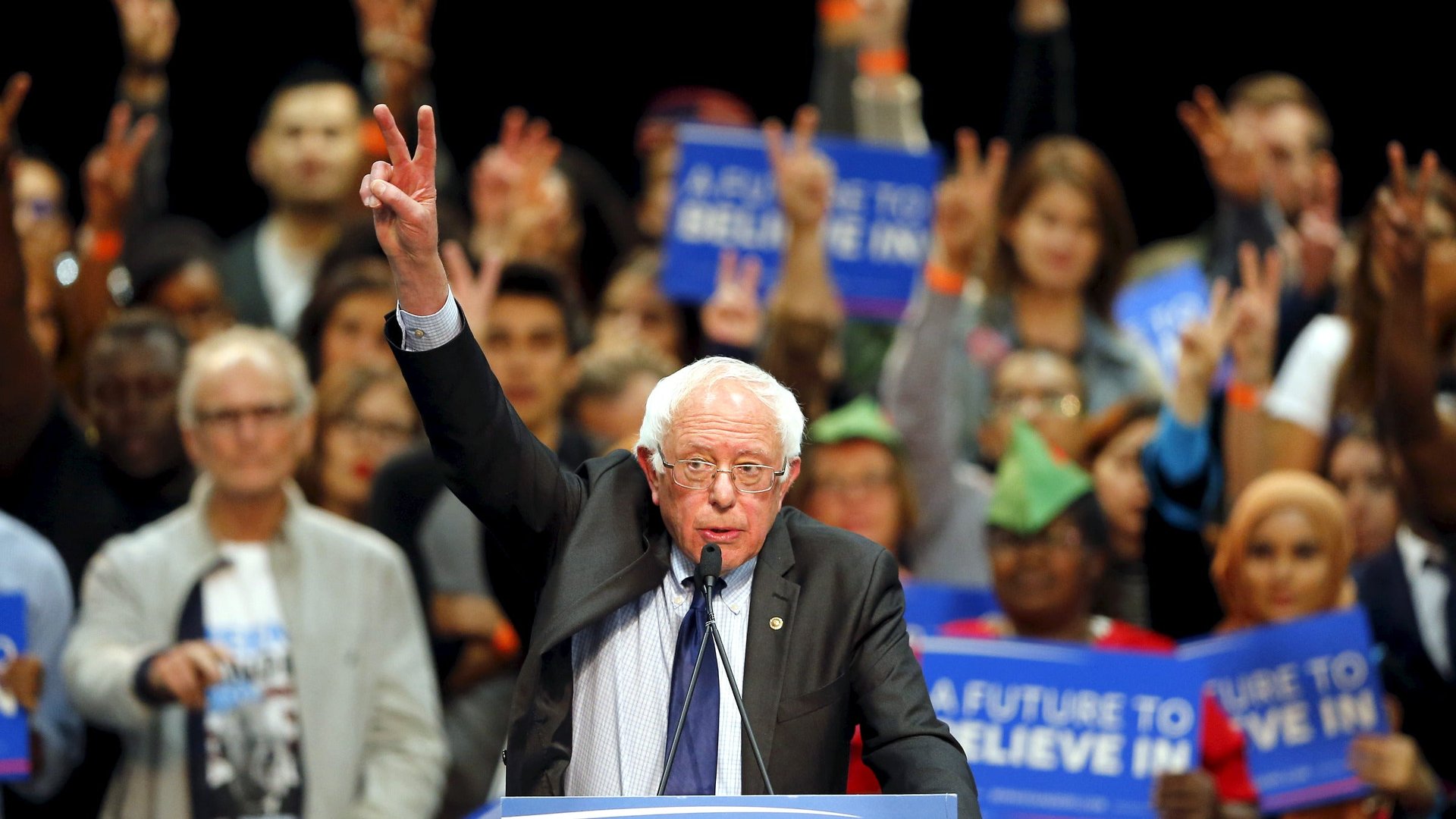Bernie Sanders wins three caucuses on the way to a New York showdown
Like all the biggest match-ups, the battle for the Democratic nomination is primed to finish in Madison Square Garden. After a sweep of three state primary caucuses last night, Senator Bernie Sanders kept his long-shot bid for the presidency alive until New York primary election next month.


Like all the biggest match-ups, the battle for the Democratic nomination is primed to finish in Madison Square Garden. After a sweep of three state primary caucuses last night, Senator Bernie Sanders kept his long-shot bid for the presidency alive until New York primary election next month.
“Nobody should have any doubt that this campaign has extraordinary momentum and that we have a path toward victory,” Sanders said in a statement. “Our political revolution is the best chance we have to keep Donald Trump or any other Republican out of the White House.”
At precincts in Hawaii, Alaska, and Washington, Democratic voters caucused Sanders over the front-runner, former Secretary of State Hillary Clinton, in overwhelming fashion. The biggest prize of the evening was Washington state’s 101 delegates to the Democratic National Convention this summer, and Sanders will take the majority.
It’s a bit of the same old story: Sanders does well in caucuses, which reward organized activists, and in more liberal states. While the Clinton camp notes that Sanders does well mostly in states with whiter populations like Alaska and Washington, his large victory in Hawaii belies that image. There, Sanders was boosted by the support of popular Representative Tulsi Gabbard, the first Hindu member of Congress.
But Clinton’s lead, established with blowout wins in states like Texas and Florida along with more close-run victories across the mid-west, still hangs over the race. Her strong support from black and latino voters has so far proven the difference in the race. While Sanders has had recent gains, Clinton’s lead—still more than 200 delegates—make Sanders path to the nomination vanishingly small.
Sanders best chance to close the gap will be in New York on April 19, when 247 delegates are at stake. Brooklyn-born Bernie will hope that he can win over the liberal precincts of his former home, but he’ll need to demonstrate increased appeal to the city’s minority voters if he wants to keep any chance of victory alive.